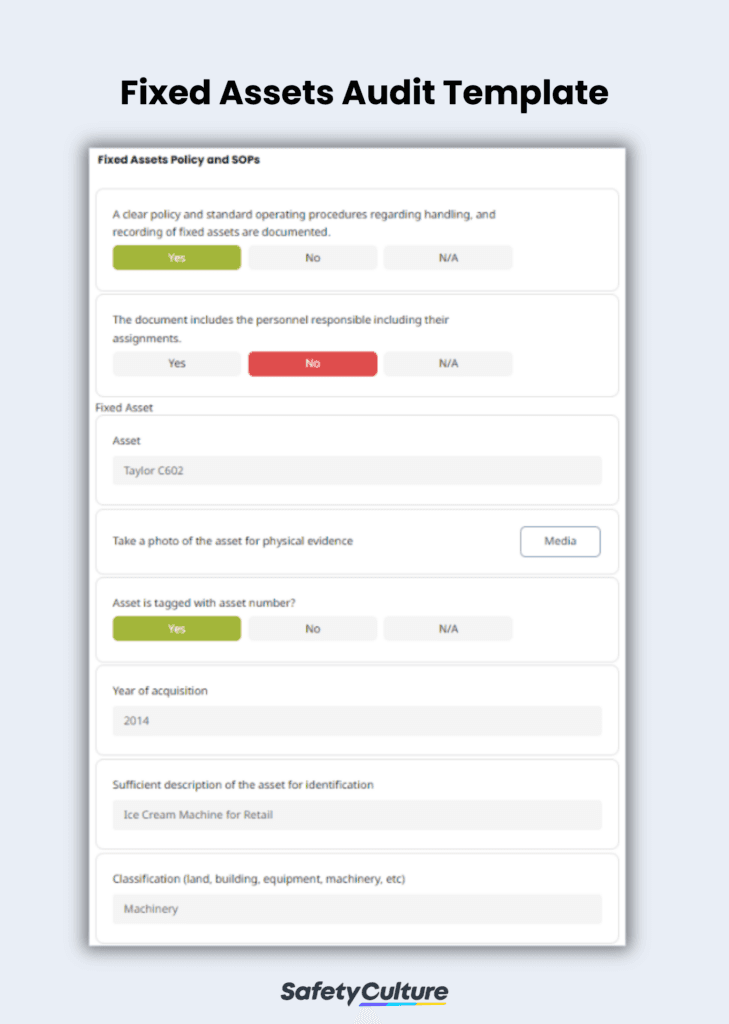What is an Asset Management System?
An asset management system is a process used by companies and organizations to monitor and manage their assets. It consists of tools, techniques, and, sometimes, software that assist in achieving asset management policies and objectives.
Managing assets allows businesses to maximize their return on investment and minimize losses. Assets are items of value that a company or an organization benefits from. Through asset management, stakeholders are able to track the overall performance and condition of their assets and ensure that they’re being utilized efficiently throughout their useful life.
What are the Objectives of an Asset Management System?
An asset management system’s objectives vary depending on what industry or type of business an organization is in. Regardless of industry, however, they can be achieved through careful and strategic planning. Here are the common goals achieved using an asset management system:
- Identify and eliminate wasting assets
Asset management helps minimize losses by rapidly identifying wasting assets across the supply chain and eliminating them. “Wasting assets” refers to items that decline in value and performance over time due to their limited lifespan. An example of wasting assets can be computer equipment, machinery, vehicles, or any asset that is vital to business operations. - Improve asset utilization
Asset management enables organizations to determine the state or condition of assets. This valuable insight helps them make business decisions that will improve the utilization and allocation of assets which, in turn, will further extend their lifespan and speed up business processes. - Maximize return on investment
When the two goals above are achieved, this ultimately results in a maximized return on investment. Companies or organizations are able to save on costs that typically go into repairs and repurchasing of assets.
Other goals that can be achieved with asset management fall under the following categories:
- Political Goals – e.g., improve the organization’s reputation in the community by staying compliant with standards and regulations
- Social Goals – e.g. protect people and properties
- Technological Goals – e.g., equip staff with appropriate technology
- Environmental Goals – e.g., reduce energy consumption
How to Develop a Strategic Asset Management Plan
A strategic asset management plan describes the specific activities, resources, and scheduling required to meet the asset management objectives of the company. Below are the steps that will help you develop your own strategic asset management plan for your business:
- Collect information
In this step, all assets owned by the organization should be accounted for. This entails gathering information such as total count, location, value, date acquired, and expected life cycle. It is also important to calculate the life-cycle costs of each asset. This information will be helpful when determining which assets need attention or removal. - Set levels of service
By setting levels of service, the services that assets provide are measured by its safety, reliability, quality, availability/accessibility, responsiveness, cost, sustainability and environmental effects. This allows organizations to determine the value of each asset and the operating, maintenance, and renewal activities that will keep it in good condition. - Specify how assets will be managed and operated
Understanding an asset’s lifecycle and lifecycle management is a key process for an asset management plan. This step summarizes the planned actions that will enable assets to meet the desired levels of service in a sustainable way. The following subsections should be determined in the strategic asset management plan:- Background Information – provides asset information such as age, size, capacity, performance, current condition and value.
- Risk Management Plan – Identifies the risks that might affect the delivery of service, goals or objectives impacted by the risk, risk identification process, risk assessment, and risk mitigation plans.
- Operating Plan – Provides defined operating procedures to meet the required service levels.
- Equipment Maintenance Plan – Outlines the defined maintenance strategies and methods, and forecasts of planned maintenance costs.
- Disposal Plan – Identifies the activities associated with the disposal of decommissioned assets. It also includes forecasts of cash flow of income/expenditures from asset disposal.
- Establish a financial strategy
This step summarizes all the financial requirements of the activities mentioned in the previous steps. A financial strategy should include historical and future budgeted capital and operating expenditures and determine funding sources. - Create an improvement plan
An improvement plan should provide improvement initiatives, responsibilities, resources, and timeframes. Having an improvement plan can help the organization monitor and control asset management activities to ensure that good asset management practices are applied and that the overall process stays on track.
What is Asset Inventory Management?
Asset inventory management is a key component of an asset management system. It focuses on the individual condition and performance of assets to help businesses properly allocate and utilize their assets.
As part of the strategic asset management plan above, asset inventory management is concerned with determining the following:
- Background Information – the total count of the asset, the date it was acquired, how long it is expected to last, its performance so far, and its current condition and value
- Equipment Maintenance Plan – the maintenance strategy for this particular asset, how to go about it, and the possible cost of maintaining the asset
- Disposal Plan – how to dispose of an asset that is no longer useful and how much the disposal of this asset will cost
Inventory Management VS Asset Inventory Management
Inventory management and asset inventory management both track the property of a business. While the two processes are very similar, they have a few differences.
Inventory management focuses on tracking items that the company sells or uses to gain profit. Meanwhile, asset inventory management focuses on tracking equipment and supplies that a company uses for daily operations. For example, the inventory of a grocery store are the products it sells, while assets refer to equipment like cash registers and barcode scanners.
To better illustrate the differences between inventory management and asset inventory management, here’s a table comparing both processes:
| Inventory Management | Asset Inventory Management | |
| Scope | Raw materials and finished goods | IT infrastructure or equipment, hardware, vehicles, buildings, intellectual property, software, financial assets, employees |
| Focus | Track location, time period held, and value of stock before sold or used | Same with inventory management but also entails analysis on depreciation, performance, and asset maintenance |
| Industry Use-case | -Retail industry (merchandise) -Hospitality industry (supplies) -Transport & logistics industry (packages) |
All industries; each business will have assets that need to be managed and taken into account |
5 Tips for Conducting Asset Inventory
The five most important tips for conducting asset inventory are the following:
1. Set up Asset Tracking and Monitoring
One of the core processes of asset inventory management is the tracking and monitoring of assets. Keeping tabs on various assets enables businesses to conduct a more organized and complete asset inventory. Monitor and track assets to ensure that problems with assets are discovered and resolved quicker. This also helps prevent assets from being disposed of earlier than expected.
Though most businesses already have an asset tracking system in place, some might make the mistake of conducting asset inventory without setting up asset tracking and monitoring first. If businesses don’t know that an asset exists, then they won’t be able to include it in any of the necessary asset inventories. Hence, asset tagging must be prioritized.
2. Organize Assets into Categories
Once an asset tracking system has been established and the business has a complete list of all its assets, the next step is to organize them into categories. This not only makes asset management in general much easier, but also helps define the scope of the asset inventory. Instead of performing a complete asset inventory, businesses can choose to conduct asset inventory in phases. For example, the asset inventory this month is for assets in Category A while the asset inventory next month is for assets in Category B.
3. Establish the Final Details
After organizing assets into categories and deciding what category to focus on for this asset inventory, businesses can set the date and time for when the asset inventory will take place.
Other details that should be discussed among management is the logistics. Certain kinds of assets might need additional preparation or special equipment (e.g. vehicles for transporting assets or the team responsible for the asset inventory to where the assets are located).
4. List Assets and Their Status
While each business has different kinds of assets, a general rule that can be applied when describing asset status once done with the physical inventory—is to state whether the asset is usable or not. Businesses can also add the following questions to further clarify the asset’s condition and performance:
- If the asset is usable, how long until it becomes unusable?
- If the asset is usable, what can be done to ensure that it stays usable?
- If the asset is not usable, is it because of time passed or lack of maintenance?
- If the asset is not usable, what can be done to make it usable?
- If the asset is beyond salvaging, what steps must be implemented to ensure that assets of the same kind do not end up like this?
5. Store Data for Future Asset Inventory
After listing assets and their status, it’s important to store this data in a secure, preferably digital, location. While storing paper asset inventory sheets in a filing cabinet can work temporarily, there are many long-term disadvantages. With a digital database, businesses can easily access and use previous asset inventory as templates for the next one.
Utilizing Today’s Technology for Asset Management
There is a lot that goes on in asset management, so much that the traditional manual workflow becomes tedious and inefficient. An organization that owns a large number of assets will surely find it difficult to monitor and utilize their assets. Fortunately, we live in the digital age, where most business processes can be automated to help organizations be agile.
Improve your Business Operations with an Asset Audit Template
Find the right template and customize to your business needs.
See MoreAsset Management Checklists
Checklists have always been a great tool for organizing tasks and getting things done. But ultimately, it can also be used for collecting accurate data. Digital checklists are greatly being used by businesses in different industries for various uses such as audits and inspections. This enables them to easily collect accurate data from teams across multiple sites as opposed to the paper checklists and forms that most often just get lost.
Digital checklists can also be a great tool for asset management. It can log and monitor an organization’s assets across multiple sites. As an example, here are a two checklists that can support asset management activities:
Fixed Assets Audit Template
This fixed asset audit template can be used in keeping records of or registering fixed assets. This template can help organizations empower their staff in gathering detailed and accurate asset information.
General Inventory Checklist
This general inventory checklist can be used to record various types of assets owned by an organization. It can collect asset information such as condition, quantity, and net value.





